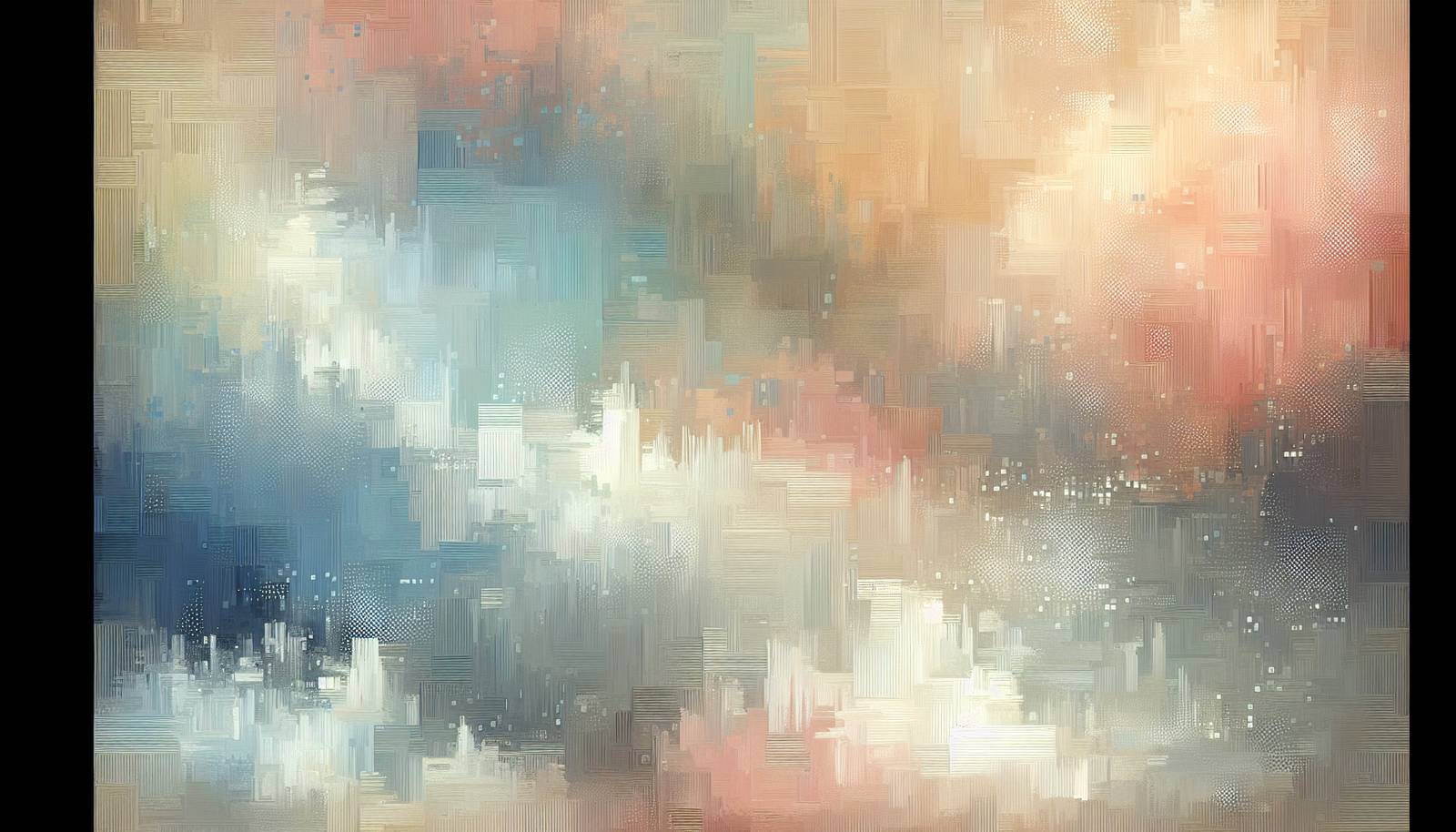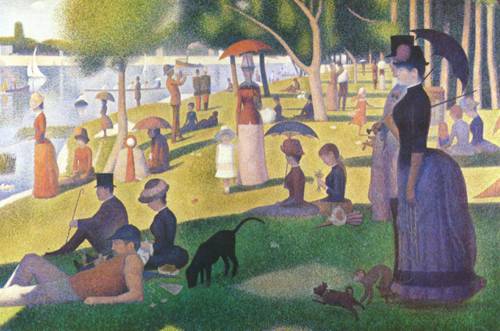
FAQ About The Influence of Neo-Impressionism on Digital Art

What is Neo-Impressionism?
Neo-Impressionism is an art movement founded by Georges Seurat in the late 19th century, distinguished by a unique technique called Pointillism. This technique involves placing dots of color in patterns to form an image. Neo-Impressionists were inspired by the Impressionists but aimed to bring a more scientific approach to color and light in their artwork.

How does Neo-Impressionism influence digital art today?
Neo-Impressionism influences digital art primarily through its methods of color theory and Pointillism. In digital media, artists recreate Pointillism using pixels, exploiting software tools that allow them to apply colors in small, controlled patterns. The principles of color blending used by Neo-Impressionists are also applied in digital color correction, shading, and image rendering techniques.

What is Pointillism and how is it used in digital art?
Pointillism is a painting technique where small, distinct dots of color are applied in patterns to form an image. In digital art, Pointillism is recreated using pixels, with artists using software tools to apply colors in similar dot patterns. This digital technique is seen in illustrations, animations, and various forms of digital design, allowing for intricate detailing and color blending.

Can Neo-Impressionism's color theory be applied to digital art?
Yes, Neo-Impressionism's color theory is highly applicable to digital art. The movement's focus on the optical blending of colors rather than physical mixing aligns well with digital methods, which rely on RGB and other color models to create a wide spectrum of colors through pixel manipulation. Digital artists use these theories to create depth, contrast, and vibrant imagery.

Are there any software tools inspired by Neo-Impressionism?
Several digital art software incorporate techniques similar to Neo-Impressionism, particularly in color manipulation and brush styles that emulate Pointillism. Programs like Adobe Photoshop and Corel Painter offer features that allow artists to use Pointillism techniques via various brush presets and settings that simulate dot application and color blending, drawing from Neo-Impressionist teachings.

What are some examples of digital artwork influenced by Neo-Impressionism?
Many contemporary digital artists use techniques reminiscent of Neo-Impressionism in their work. This may include digital paintings that use dot-based methods and vibrant color palettes characteristic of Pointillism. Specific examples often feature in visual media such as digital illustrations, video game art, and digital interpretations of classic artworks reimagined through a Neo-Impressionist lens.

How does digital Pointillism differ from traditional Pointillism?
Digital Pointillism differs from traditional Pointillism primarily in its medium and technique. While traditional Pointillism uses physical paint and brushes on canvas, digital Pointillism utilizes software tools and digital canvases. This allows for easier replication and manipulation of dot sizes, colors, and compositions, offering artists more versatility and precision with their work.

Why is color theory important in digital art?
Color theory is crucial in digital art as it guides how artists create visually appealing and harmonious compositions. It influences color balancing, contrast, and the emotional impact of artwork. By understanding how colors interact, digital artists can manipulate hues, saturation, and brightness to achieve specific artistic effects and convey different moods or messages in their work.

What role does Neo-Impressionism play in modern digital design?
Neo-Impressionism plays a significant role in modern digital design by inspiring techniques in color application and visual texture. Designers incorporate pointillist methods to add depth and interest to digital graphics, while Neo-Impressionist color theory informs modern approaches to digital illustration, branding, and multimedia art, enhancing visual storytelling through informed use of color dynamics.

How are contemporary artists merging Neo-Impressionism with digital tools?
Contemporary artists merge Neo-Impressionism with digital tools by using software to apply pointillist techniques and develop complex color schemes. They leverage digital technology to explore the interplay of light and color in innovative ways, often combining traditional art skills with modern digital capabilities to produce work that bridges historic art movements with cutting-edge technology.

Does digital art lose any qualities from traditional Neo-Impressionism?
While digital art offers new possibilities for Neo-Impressionist techniques, it can lack the tactile quality and physical texture of traditional artworks. The physical layering of paint and the texture of the canvas contribute to the sensory experience of viewing a Neo-Impressionist painting, which may not be fully replicated in a digital format. However, digital art can still capture the essence of color dynamics and technique.

What is the significance of pixels in digital art akin to Pointillism?
Pixels in digital art are analogous to dots in Pointillism, serving as the basic building blocks of digital images. By manipulating individual pixels, artists can create sophisticated images, similar to how Pointillism utilizes dots to form patterns and images. This approach allows for detailed control over color and form, echoing the principles of Neo-Impressionism in a modern digital context.

How do digital artists simulate the effect of Pointillism?
Digital artists simulate Pointillism effects by using various software tools that allow for precision in placing colored dots on a digital canvas. By adjusting brush size, opacity, and layering techniques, artists can mimic the look of traditional Pointillism. Some software even offers specific brushes and filters designed to emulate the textured, dotted appearance characteristic of classic Pointillism art.

How does Neo-Impressionism's scientific approach apply to digital media?
Neo-Impressionism's scientific approach to color and light analysis applies to digital media through advanced color models and rendering techniques. Digital artists use these scientific methods to programmatically simulate natural lighting, shadow effects, and color transition, enabling them to create lifelike images and animations that reflect the realism and nuanced color perception championed by Neo-Impressionism.

Are there any educational resources for learning Neo-Impressionism in digital art?
There are numerous educational resources for learning about Neo-Impressionism in digital art, including online courses, digital painting tutorials, and articles dedicated to color theory and Pointillism techniques. Websites such as Coursera, Skillshare, and YouTube provide valuable lessons and demonstrations by experienced artists, which can help learners understand and apply these techniques in their own digital art practices.

What challenges do artists face when adopting Neo-Impressionist techniques in digital art?
Artists face challenges such as recreating the texture and depth of physical paint when using digital platforms. Additionally, mastering digital tools to accurately apply techniques like Pointillism requires time and practice. Balancing the vibrancy and subtleties of color schemes in a digital medium can also be complex, requiring an understanding of digital color spaces and their limitations.

Can digital Pointillism be applied to animation?
Yes, digital Pointillism can be applied to animation. Animators can use pointillist techniques in frame-by-frame sequences or incorporate dot-like elements to create textures and visual effects that mimic traditional Pointillism. This blending of techniques allows for unique stylistic animations that convey depth, texture, and movement in visually engaging ways.

What makes Neo-Impressionist techniques appealing to digital artists?
Neo-Impressionist techniques appeal to digital artists because they offer a distinct method for color expression and pattern creation. The movement's emphasis on color dynamics and detailed imagery aligns well with digital capabilities, allowing artists to explore intricate designs and vivid color palettes more freely than with traditional media, thus expanding their creative potential.

How has Neo-Impressionism influenced the development of digital art tools?
Neo-Impressionism has influenced the development of digital art tools by inspiring features that simulate traditional techniques such as dot application and color blending. Software developers leverage the principles of Neo-Impressionism, incorporating brush presets and algorithms that emulate color patterns and textural effects, making it easier for artists to create artwork that follows the aesthetic of this historical art movement.

What future possibilities exist for Neo-Impressionism in digital mediums?
The future possibilities for Neo-Impressionism in digital mediums are vast, as technology continues to evolve, creating more sophisticated tools for artists. With advancements in AI and VR, digital artists may explore even more immersive environments, using Neo-Impressionist techniques to create interactive installations or augmented reality experiences that engage audiences with color and form on a new level.
